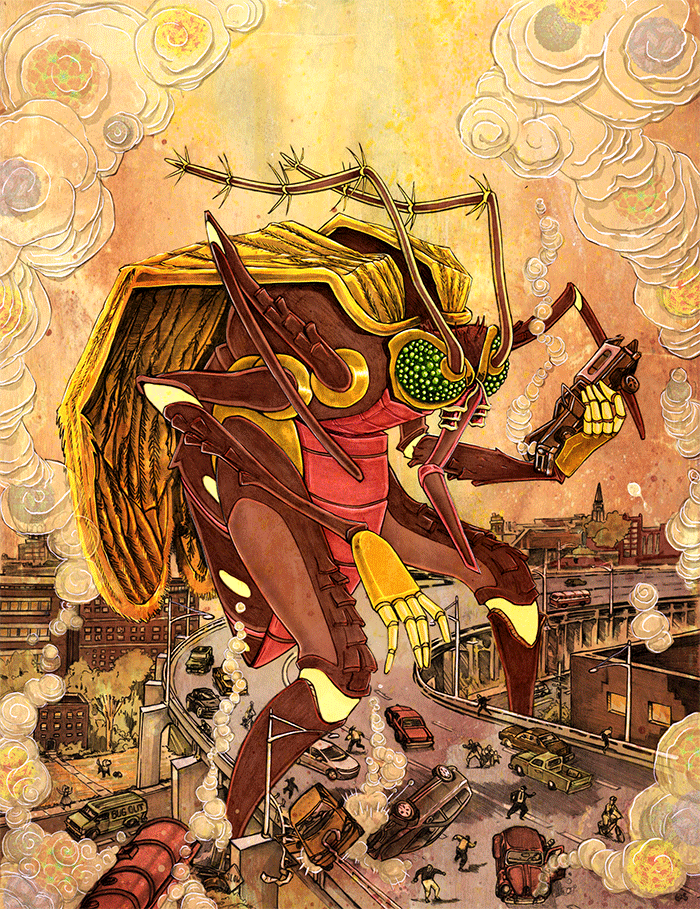Check out the February issue of GENETICS by looking at the highlights or the full table of contents!
ISSUE HIGHLIGHTS
Feeding-related traits are affected by dosage of the foraging gene in Drosophila melanogaster, pp. 761-773
Aaron M. Allen, Ina Anreiter, Megan C. Neville, and Marla B. Sokolowski
The foraging gene has been implicated in multiple feeding-related traits. Allen et al. precisely deleted the foraging gene and used recombineering to re-integrate a full copy, generating the {forBAC} rescue allele. Total loss of foraging expression in larvae resulted in reduced larval path length and food intake and increased triglyceride levels. Varying gene dosage demonstrated a linear dose-response of these phenotypes to foraging expression levels. These experiments reveal a causal, dose-dependent relationship between the foraging gene and its pleiotropic influence on feeding-related traits.
Evidence for amino acid snorkeling from a high-resolution, In Vivo Analysis of Fis1 tail anchor insertion at the mitochondrial outer membrane, pp. 691-705
Abdurrahman Keskin, Emel Akdogan, and Cory D. Dunn
Charged amino acids are often considered unacceptable in protein regions integrated within lipid bilayers. Indeed, algorithms predicting membrane-integrated domains often take amino acid charge into consideration. Previous theoretical work and several in vitro studies have suggested that the side chains of lysine and arginine can reach to the bilayer surface, removing the positive charge from the hydrophobic portion of the membrane. This process is called amino acid ‘snorkeling’. By examining nearly all amino acid replacements within the membrane anchoring sequence of the mitochondrial protein Fis1, Keskin et al. provide in vivo evidence for amino acid snorkeling.
Correlated mutations and homologous recombination within bacterial populations, pp. 891-917
Mingzhi Lin and Edo Kussell
Homologous recombination is a critical process in bacterial evolution, yet measuring its basic parameters, such as rates and fragment sizes, remains theoretically challenging as well as computationally expensive. The authors introduce and apply a new population genetic approach for inferring recombination rates from bacterial sequence data. The method is extremely fast and efficient, does not employ phylogenetic inference or other computationally-intensive numerics, and is therefore applicable in many different contexts.
An unexpected regulatory cascade governs a core function of the Drosophila PRC1 chromatin protein Su(z)2, pp. 551-558
Son C. Nguyen, Stephanie Yu, Elaine Oberlick, and Chao-ting Wu
Polycomb group (PcG) proteins are major chromatin-bound factors that can read and modify chromatin states to maintain gene silencing throughout development. Nguyen et al. reveal that, contrary to previous reports, the essential functions of Suppressor 2 of zeste (Su(z)2), a close homolog of the PcG protein Posterior Sex Combs, do not lie within the C-terminal region. Instead, the region essential for viability lies within the N-terminal end, called the homology region (HR), and this essential activity is controlled by a cascade of inhibitory intramolecular interactions encoded by two subregions of Su(z)2.
The effect of an extreme and prolonged population bottleneck on patterns of deleterious variation: insights from the Greenlandic Inuit, pp. 787-801
Casper-Emil T. Pedersen, Kirk E. Lohmueller, Niels Grarup, Peter Bjerregaard, Torben Hansen, Hans R Siegismund, Ida Moltke, and Anders Albrechtsen
Pedersen et al. use high-depth exome sequencing data to show that the Greenlandic Inuit population has recently undergone a severe 20,000-year-long bottleneck. Such demographic history is the most extreme ever observed for any human population and has therefore led to a markedly more extreme distribution of allele frequencies than seen for any other human population. The authors show that the distribution of deleterious alleles are markedly different and reveal that selection is likely to have been reduced as a consequence of this extended bottleneck. These results suggest there is improved power for finding novel disease associations in the Inuit.
Cooperation between kinesin motors promotes spindle symmetry and chromosome organization in oocytes, pp. 517-527
Sarah J. Radford, Allysa Marie M. Go, and Kim S. McKim
The oocyte spindle in most animal species is assembled without the assistance of the microtubule-organizing centers called centrosomes. Radford et al. show that the kinesin-5 KLP61F is required for spindle and centromere symmetry in oocytes. The asymmetry observed in the absence of KLP61F depends on NCD, the kinesin-12 KLP54D, and the microcephaly protein ASP The authors propose that the activities of several proteins, including NCD, ASP and KLP54D, generate asymmetries within the acentrosomal spindle, while KLP61F balances these forces.
Genetic mechanisms leading to sex differences across common diseases and anthropometric traits, pp. 979-992
Michela Traglia, Dina Bseiso, Alexander Gusev, Brigid Adviento, Daniel S. Park, Joel A. Mefford, Noah Zaitlen, and Lauren A. Weiss
Diseases often show sex differences. Traglia surveyed a number of complex heritable diseases and anthropometric traits for genetic sex differences. They did not find consistent excess genetic risk in the lower-prevalence sex or a disproportionate role for the X chromosome in disease risk, despite sex-heterogeneity on the X for several traits. All anthropometric traits showed sex-differential genetic contributions and the authors find a convincing example of genome-sex interaction in multiple sclerosis. They also describe evidence for hormone-responsive gene enrichment and striking evidence of the contribution of secondary sex characteristic differential associations to common disease risk.
Evolution of resistance against CRISPR/Cas9 gene drive, pp. 827-841
Robert L. Unckless, Andrew G. Clark, and Philipp W. Messer
CRISPR/Cas9 gene drive (CGD) promises a highly adaptable approach to controlling pests or disease vectors by spreading genetically engineered alleles throughout a species. The authors examine the likelihood that resistance to gene drive evolves prior to driver fixation, potentially limiting the ability of the driver to transform whole populations. The results shed light on possible strategies for engineering drivers with lower potential for resistance as well as the potential use of resistance as a mechanism for controlling CGD.































